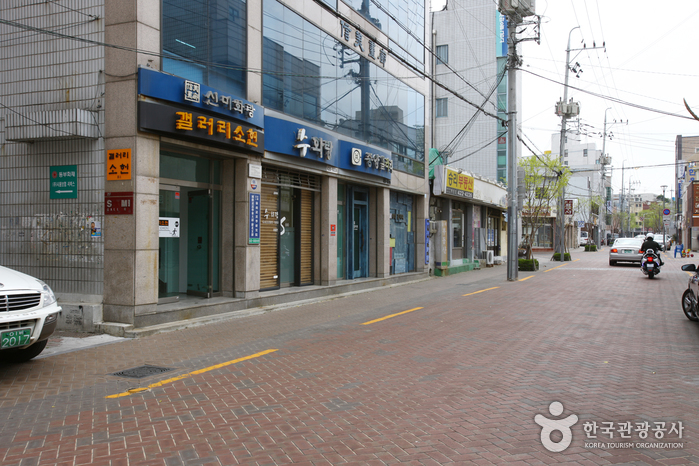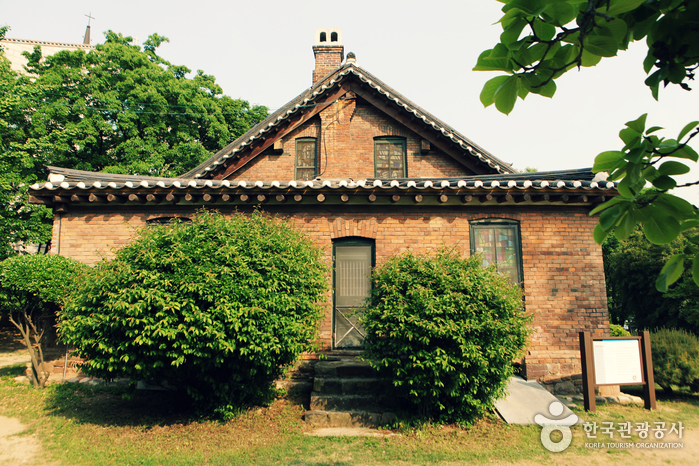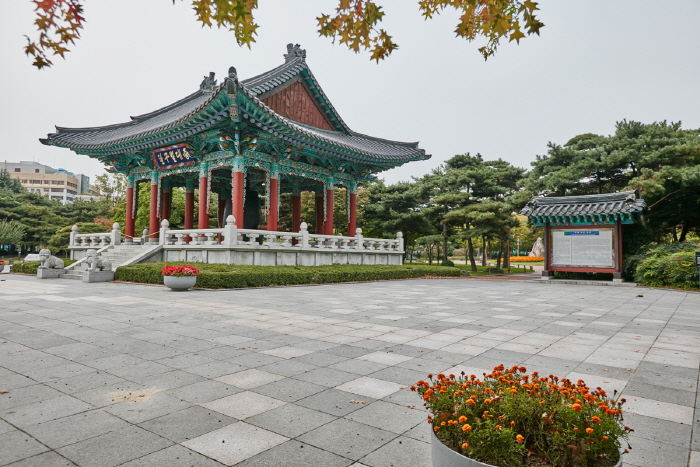Jeongilpoom - Dongseong-ro Branch [Tax Refund Shop] (정일품 동성로 [사후면세점])
639.5M 2024-04-23
147, Gijanghaean-ro, Gijang-eup, Gijang-gun, Busan
-
Daegu Goods - Daegu Branch [Tax Refund Shop] (대구굿즈 대구)
644.4M 2024-04-19
1F, 69, Seoseong-ro 14-gil, Jung-gu, Daegu
-
Korea Medical Institute Daegu Branch ((재)한국의학연구소 대구분사무소)
644.7M 2025-10-23
B1-B2, 20 Jungang-daero 66-gil, Jung-gu, Daegu
Korea Medical Institute (KMI), a leader in 'K-health checkups,' operates health checkup centers across eight locations nationwide, from Seoul to Jeju. KMI has been striving to prevent and detect diseases early. It has led the popularization of comprehensive medical examinations in Korea. Based on 43 years of accumulated data and expertise, KMI has enhanced its capabilities in health checkups, services, and brand value.
By utilizing its diagnostic data accumulated over the years, KMI provides accurate test results and follow-up care promptly.
KMI will stay committed to becoming a lifetime health management partner and 'K-health checkup' leader by leveraging its excellence in Korean medicine, beyond health checkups for foreign patients.
March 1st Independence Movement Road (3·1만세운동길)
669.3M 2023-01-20
Dongsan-dong, Jung-gu, Daegu
March 1st Independence Movement Road is a historical location where Daegu citizens gathered for the independence movement on March 8, 1919, and the midpoint of Daegu Modern Alley Tour Course 2. Passing Cheongna Hill Missionary's House and Jeil Church, you will come to a road with murals of the independence movement. The March 1st Independence Movement Road is a hilly road leading to Gyesan Cathedral. It is also called 90 Stairs because there are 90 steps. On the wall of the stairs, there is an augmented reality (AR) experience zone along with site photos from history. By scanning the QR code is a 3D video that vividly reproduces the independence movement, enabling a realistic experience of history. Follow the signs of the Daegu March 8th Independence Movement marching road to reach the main road and it will lead to the the 100th anniversary monument of the March 1st Movement and the starting point of the March 8 Movement. A guided alley tour is available for free with an online reservation on the official website.
Zenith - Daegu Branch [Tax Refund Shop] (제니스 대구)
672.3M 2024-04-19
75, Dongseong-ro, Jung-gu, Daegu
-
Bongsan Culture Street (봉산문화거리)
733.3M 2025-01-09
38, Bongsanmunhwa-gil, Jung-gu, Daegu
+82-53-425-6845
Bongsan Culture Street is a landmark culture & arts place in Daegu. The street, which stretches all the way from Daegu Hakwon to Bongsan Yukgeori (six-way intersection), has over 20 galleries of various sizes.
It was 1991 when the small alley with several art galleries started to turn into a breeding ground for culture and the arts. Soon after, the street was officially designated ‘Bongsan Culture Street’ and subsequently, the roads were neatly paved, artistic street lamps were installed, and streetside gardens were created. With the opening of Bongsan Culture Center and Cultural House for Teens, the street became increasingly frequently by citizens, not just professional artists.
At Bongsan Culture Street, artwork os on display throughout the year and every October (when the Bongsan Art Festival is held) the whole street is filled with artistic passion.
Dongsan Cheongna Hill (동산청라언덕)
770.5M 2025-10-24
2029 Dalgubeol-daero, Jung-gu, Daegu
+82-53-627-1337
Cheongna Hill is the place where Christian missionaries resided during the early 20 century, planting many ivies along the site. It is also called Dongsan Cheongna Hill for being on the eastern side of Daegu's center. There are many attractions in this beautiful garden including Chamness’ House, Switzer’s House, Blair’s House, 90 stairs, Daegu 3.1 Independence Movement Road, Daegu's first western apple tree, a memorial stone inscribed with the song "Thinking of My Friend” , and the cemetery of the missionaries and their family. Cheongna Hill is also the starting point of Daegu's Street Tour Course 2 as well as a popular drama film location.
House of Missionary Switze (선교사스윗즈주택)
770.5M 2024-08-05
2029 Dalgubeol-daero, Jung-gu, Daegu
The House of Missionary Switze served as home for a host of American missionaries. Built between 1906 and 1910, the home is a Western-style structure with two above-ground floors and one basement level. In 1981, the house was used as company housing for doctors at the nearby Dongsan Hospital, at which point changes were made to the interior and exterior of the house. It was later changed into a missionary museum, displaying items used by the missionaries who lived in.
House of Missionary Chamness (선교사챔니스주택)
825.4M 2022-09-06
2029, Dalgubeol-daero, Jung-gu, Daegu
+82-53-661-2193
House of Missionary Chamness was the home of American Christian missionary Chamness and his family. It was built in the Western-style and provides a glimpse into the daily life of American missionaries in Korea. The house, a simple building in comparison with the houses of America at the time, is now considered a very important treasure of Korea's modern history. The building has been converted into a small museum using artifacts from the missionaries to bring the past to life.
National Debt Redemption Movement Memorial Park (국채보상운동기념공원)
834.9M 2021-08-25
670, Gukchaebosang-ro, Jung-gu, Daegu
+82-53-745-6753
Construction on the National Debt Redemption Movement Memorial Park began in March 1998 and was completed in December 1999. The park was established to retain the spirit of the National Debt Redemption Movement that originated in Daegu in 1907 and the 2nd movement in 1997 that was held to help overcome the national economic distress affected by the Asian Financial Crisis of 1997. The park also expanded the green space in the downtown area and offers a place of rest and relaxation to the general public.
Spanning 42,500 square meters in size, the park boasts the Dalgubeol Grand Bell, a bell pavilion, walking trails, and other amenities. The famous Dalgubeol Grand Bell was installed on the park grounds in December 1998 as a representation of harmony and prosperity and to symbolically awaken the people with its pure and clear ringing. In addition the convenient and beautifule amenities, the park also has several memorial plaques engraved with quotes from many significant historical figures who shaped Korea's culture and values.
![Jeongilpoom - Dongseong-ro Branch [Tax Refund Shop] (정일품 동성로 [사후면세점])](http://tong.visitkorea.or.kr/cms/resource/58/2883958_image2_1.jpg)




 English
English
 한국어
한국어 日本語
日本語 中文(简体)
中文(简体) Deutsch
Deutsch Français
Français Español
Español Русский
Русский